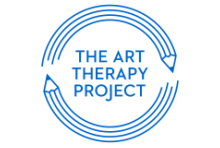Art therapy is a treatment method that uniquely combines art and psychology to explore problems and potentials of individuals while providing an opportunity for people to “revisit” rather than “re-live” traumatic experiences. Art therapy can be an effective treatment for reaching traumatized individuals, many of whom have been unable to progress with traditional talk therapy.
Our art therapy groups meet weekly for 60-90 minute sessions and, in order to provide an art-making ... Lire la suite
Art therapy is a treatment method that uniquely combines art and psychology to explore problems and potentials of individuals while providing an opportunity for people to “revisit” rather than “re-live” traumatic experiences. Art therapy can be an effective treatment for reaching traumatized individuals, many of whom have been unable to progress with traditional talk therapy.
Our art therapy groups meet weekly for 60-90 minute sessions and, in order to provide an art-making environment that promotes trust and support among the group participants, are formed around participants who share a common experience, such as having experienced Military Sexual Trauma (MST) or escaping from an abusive home. In a non-threatening therapeutic environment, the universal language of the visual arts encourages emotional resilience, behavioral change and a new capacity for self-reflection and growth.
Art therapy is an effective mental health treatment for people experiencing developmental, medical, educational and social or psychological impairment. Individuals who benefit from art therapy include those who have survived trauma resulting from combat, abuse, and natural and manmade disasters; persons with adverse physical health conditions such as cancer, traumatic brain injury and other health disabilities; and persons with autism, dementia, depression and other disorders. Art therapy helps people resolve conflicts, improve interpersonal skills, manage problematic behaviors, reduce negative stress and achieve personal insight. Art therapy gives participants the ability to enjoy the life-affirming pleasures of art making. Art therapy may also assist with development of language to describe and process traumatic experiences through establishment of stronger connections and symbolic communication.
In collaboration with our Program Partners, The Art Therapy Project offers weekly and monthly on-going art therapy groups plus a number of special workshops. Program Partners identify which of their clients would be most appropriate art therapy group participants, eliminating the need for us to screen clients and provide case management. It is a cost effective model, intended to deliver therapeutic services in a highly efficient manner by reducing the duplication of services.
The Art Therapy Project is proud to partner with some of the City’s most respected nonprofit organizations. Our youth Program Partners are: Avenues for Justice; CARES; Children’s Village; Hawthorne Cedar Knowles Academy; JVL Wildcat Academy; Mt. Pleasant Blythedale School, New Alternatives for Children, New Destiny Housing and the NYC Department of Education District 15. Our Adult Program Partners are: Anti-Violence Project; Callen-Lorde; Center for Urban Community Services, Crime Victims Treatment Center; Educational Alliance; Footsteps; Jericho Project; Manhattan VA Hospital; Mount Sinai Beth Israel Addiction Institute; NYU Military Family Clinic; and Unchained at Last.
The Art Therapy Project also runs special sessions in response to community needs such as the work we did with employees from Bronx-Lebanon Hospital following the hostage/shooting incident. In the height of the COVID pandemic, we developed special Wellness Workshops for Frontline and Essential Workers. These workshops are also available to companies looking to support their employees' wellness. Recently, we have seen a spike in requests for art therapy services for staff who provide direct service and we are exploring these opportunities as well as delving into what is behind this trend.
Secondary traumatic stress, or vicarious trauma, is becoming increasingly understood as an issue that mental health workers face at some point in their careers. It can happen when working closely with those who have experienced first-hand trauma or who are diagnosed with PTSD, when hearing stories of traumatic events or when emotionally holding traumatic energy to support clients.
Professionals who experience this secondary trauma have increased stress, increased negative thought patterns and higher job burnout rates. Mental health workers are aware of the importance of self-care and healthy coping skills to address secondary trauma, but often struggle to put this knowledge into practice, especially from within their workplace.
Our hope is by integrating staff groups into some of our programming that we are able to better support our program partners, their staff and in turn, our clients.
The Art Therapy Project works with individuals ranging in age from 5 to 75+. Approximately 45% of our clients are youth growing up in low-income communities with constant exposure to gang violence, drugs and domestic abuse, or are in the foster care system. Youth served are 62% female, 36% male and 1% trans/non-conforming with 52% between the ages of 15-19 and 25% between the ages of 10-14. Ethnically diverse, our youth are 48% African-American; 25% Latina/o; 12% Mixed-race; 2% Other and 7% Caucasian. All five boroughs of New York City are represented as well as Lower Westchester.
Our adult clients are 59% male, 30% female; 2.5% trans/non-conforming with the balance not answering the question. Also ethnically diverse, 29% are African-American; 25% Latina/o; 23% Caucasian; 7.5% Other; 6% Mixed-race and 1.5% Asian. More than 90% of our adult clients are from low-income communities throughout New York City; many are on disability and/or unable to work due to their trauma.
The Art Therapy Project remains the only nonprofit in New York City dedicated to providing these vital services to marginalized populations. Within the nonprofit arena, TATP is recognized as being reliable, providing the highest quality services, working collaboratively to meet the needs of program partners and clients, and making services accessible to many communities not typically able to receive art therapy.
Cacher le texte au complet